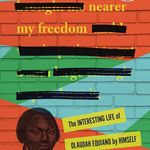15th-19th Centuries
Enslavement & Resistance in the Atlantic and Indian Ocean Worlds
Between the sixteenth and nineteenth centuries, an estimated 12.5 million people were forcibly enslaved and transported from Africa to the Americas during the Trans-Atlantic and Trans-Indian Oceanic Slave Trade. As one of the largest forced human migrations to date, this shaped global development culturally, socially, and economically, the effects of which are still visible today.
In many countries of the Americas, there were more Africans than there were Europeans. The effects of the slave trade still impacts today’s society; in some countries there are still more Africans than Europeans, and in many countries the lingering effects of slavery still impact the social hierarchy of society. As a result of the slave trade, everyone who lived or came to live in the Americas was impacted one way or the other by this history. It affected race relations, culture, foods, architecture, religion and much more. Africans were able to bring some of their home cultures with them, because culture is carried in the heart and mind.
This curated resource list contains lesson plans, visuals, teaching materials, and informational website links for teaching about and studying slavery and the slave trade.
Lessons
|
Books that center the lives of Africans
 Abina and the Important Men – a powerful graphic novel by historian Trevor Getz, the first of its kind, is a “graphic history” based on an 1876 court transcript of a West African woman named Abina, who was wrongfully enslaved and took her case to court. The book is a microhistory that does much more than simply depict an event in the past; it uses the power of illustration to convey important themes in world history and to reveal the processes by which history is made. Abina and the Important Men – a powerful graphic novel by historian Trevor Getz, the first of its kind, is a “graphic history” based on an 1876 court transcript of a West African woman named Abina, who was wrongfully enslaved and took her case to court. The book is a microhistory that does much more than simply depict an event in the past; it uses the power of illustration to convey important themes in world history and to reveal the processes by which history is made.
The book is available on the internet archive. A film was made adapting the book. The author wrote a useful article on OER Project on how to use graphic histories in the classroom. |
 Nearer my Freedom by Lesley Younge and Monica Edinger, who use Olaudah Equiano’s autobiography The Interesting Narrative of the Life of Olaudah Equiano to write Equiano’s life story in “found verse” which makes it an accessible book for upper primary and middle school level. The authors add annotations to give readers historical context. The book invites students to follow Equiano from his life in Africa as a child to his enslavement at a young age, his travels across the Atlantic Ocean and Mediterranean Sea, his liberation, and his life as a free man. Nearer my Freedom by Lesley Younge and Monica Edinger, who use Olaudah Equiano’s autobiography The Interesting Narrative of the Life of Olaudah Equiano to write Equiano’s life story in “found verse” which makes it an accessible book for upper primary and middle school level. The authors add annotations to give readers historical context. The book invites students to follow Equiano from his life in Africa as a child to his enslavement at a young age, his travels across the Atlantic Ocean and Mediterranean Sea, his liberation, and his life as a free man.
Access a full teaching guide on this book. |
Professional Development

Histories of Enslavement, Indenture, and Resistance in the Indian Oceanis a series of workshops we held in 2024 to support teachers to engage with Indian Ocean history. The page offers presentations by Richard Allen, Vijaya Teelock, and Krish Seetah. |
An older but still useful resource:
- Slavery (BBC – The Story of Africa)
